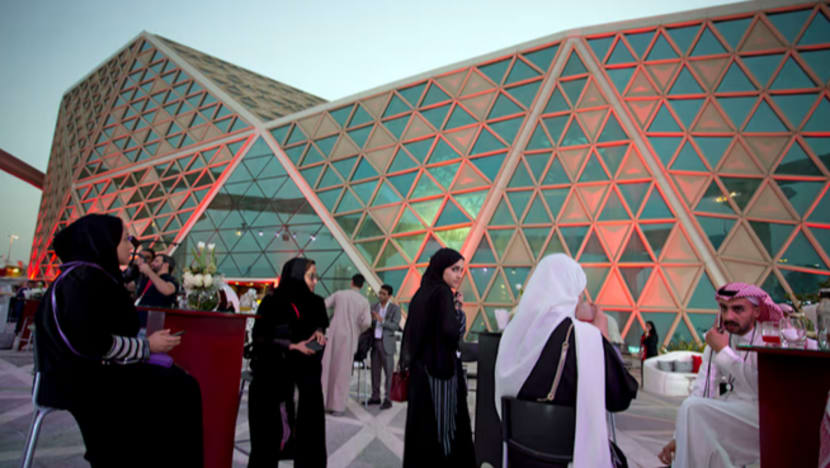Saudi Arabia steps up efforts to woo Asian travellers in push to become global tourism hub
The kingdom, long known for luxurious tourism, now wants to broaden its appeal to include mid-budget travellers as it seeks to decrease its economy's reliance on oil.

Tourists visit the Edge of the World, a natural cliff formation landmark and popular tourist destination, near Riyadh, Saudi Arabia on Dec 18, 2019. (Photo: iStock)

This audio is generated by an AI tool.
RIYADH: Saudi Arabia is stepping up efforts to attract more visitors from Asia as it seeks to diversify its economy and position itself as a global tourism hub.
Tourism Minister Ahmad Al-Khateeb said the kingdom has been adapting to meet the expectations of Asian travellers, describing the region as one of the most important markets for Saudi Arabia’s growing tourism ambitions.
“For us, Asia is very, very important, starting from China. Japan is also very important, (as well as) Singapore, Thailand, Indonesia, Malaysia, etc,” he added.
“We have been in contact with travel agents to learn more about Asian travellers and understand what they need when they travel.”
Al-Khateeb was speaking to CNA on Tuesday (Nov 11) on the sidelines of the inaugural TOURISE summit in Riyadh, hosted by Saudi Arabia’s Ministry of Tourism.
To better serve visitors from Asia, Al-Khateeb said the sector has been working to improve flight connectivity and introduce measures to make travel to Saudi Arabia easier and more enjoyable.
The kingdom, long known for luxurious tourism offerings and religious pilgrimages, now wants to broaden its appeal to include mid-budget travellers. It plans to build more accommodations at lower price points as part of that strategy.
CHINA LEADS THE MARKET
The number of Chinese tourists to Saudi Arabia is expected to reach half a million this year, a sharp increase from just 100,000 in 2023, according to Xinhua News Agency, quoting Al-Khateeb.
With a goal of attracting 5 million Chinese visitors by 2030, Riyadh is intensifying outreach efforts through stronger promotions and collaborations with travel agencies.
Saudi Arabia is also working to increase direct flights with China, with several nonstop routes already operated by Saudi Arabia’s flag carrier Saudia and China Eastern Airlines.

Al-Khateeb said the sector is investing in technology and human capital to enhance visitor experience.
The country is training a growing pool of Mandarin-speaking tour guides and drivers, while an AI-powered chatbot named Noura can provide information about Saudi attractions and answer tourism-related questions in Chinese.
REDUCING RELIANCE ON OIL
Tourism is a cornerstone of Crown Prince Mohammed bin Salman’s Vision 2030 strategy to diversify the kingdom’s economy beyond oil.
Saudi Arabia aims to attract 150 million tourists annually by 2030, with at least one-third coming from overseas.
Last year, it welcomed a record 30 million inbound tourists, marking an 8 per cent increase from 2023. They spent US$45 billion, up 20 per cent year-on-year.
The tourism sector currently contributes around 5 per cent to the Saudi economy, a figure the government aims to double within five years.
Al-Khateeb emphasised that Saudi Arabia’s approach to tourism is grounded in openness and cultural exchange.
“Tourism never gets into politics. Tourism is people-to-people,” he said. “Our doors and hearts are open to every nation.”
The TOURISE summit, which runs until Thursday, brings together 7,000 participants from global public and private sectors to discuss the future of tourism and explore new investment opportunities.
On Tuesday, organisers announced investment portfolios worth US$113 billion across retail, accommodation, wellness, talent development and AI-powered platforms.















